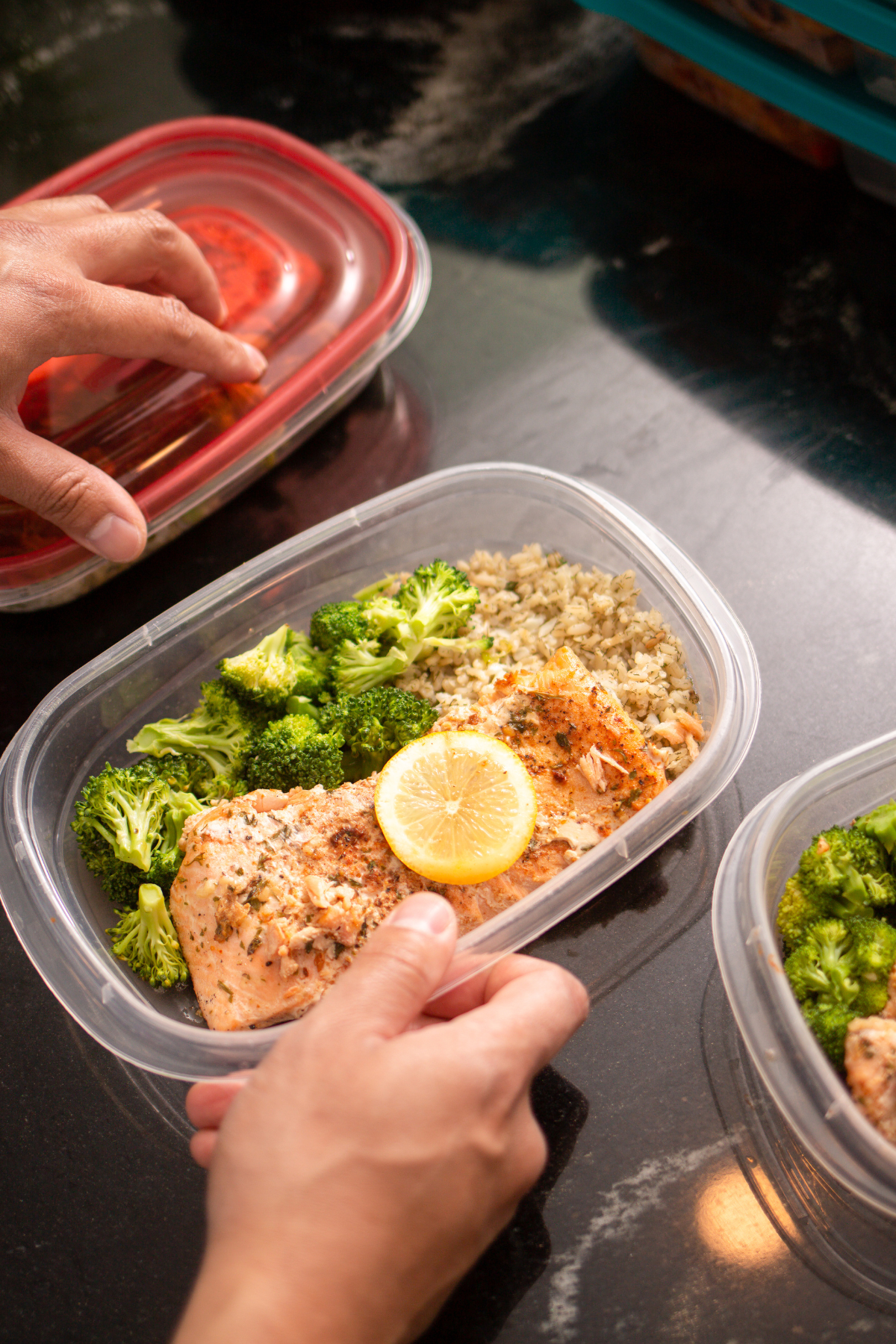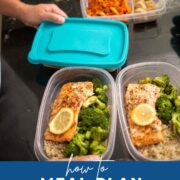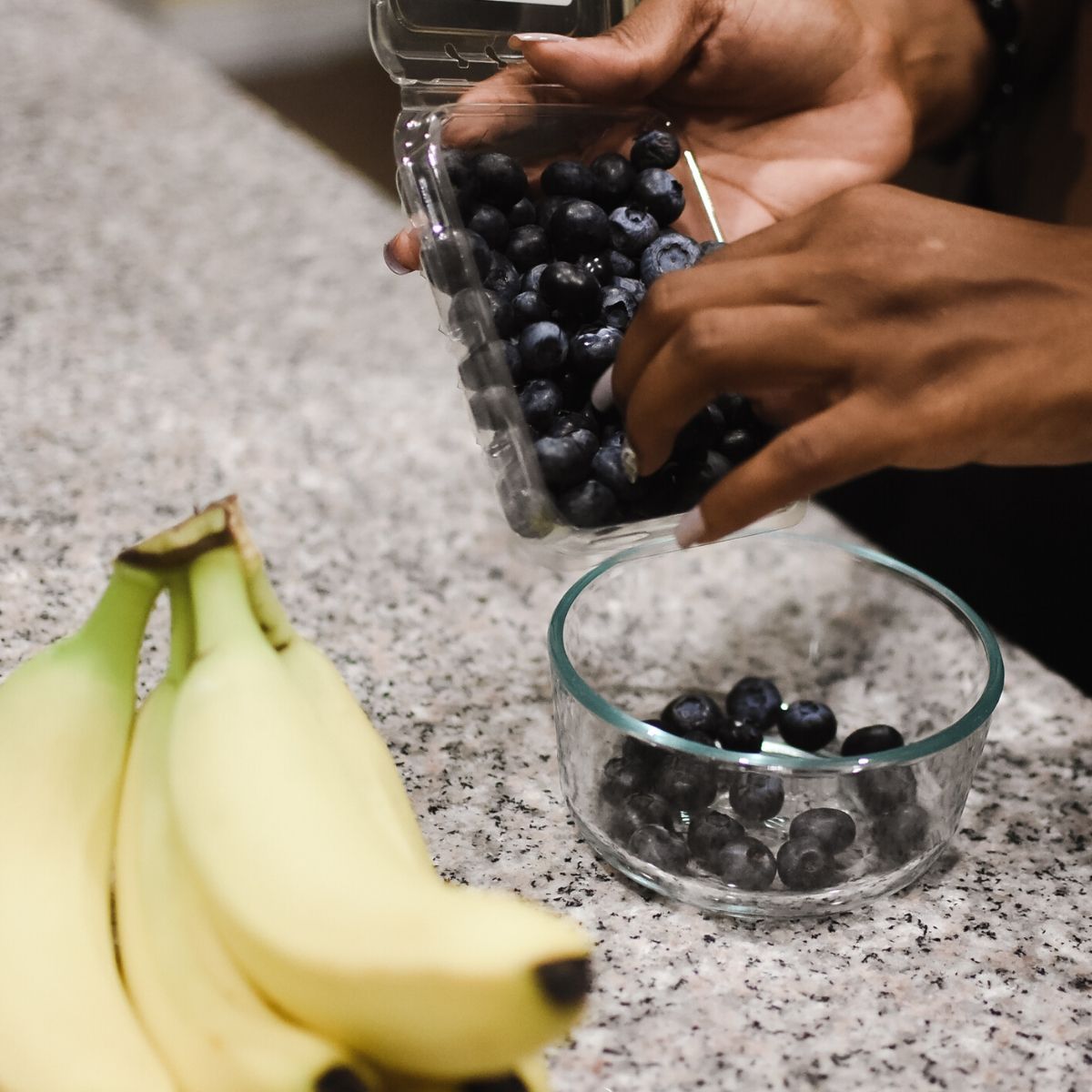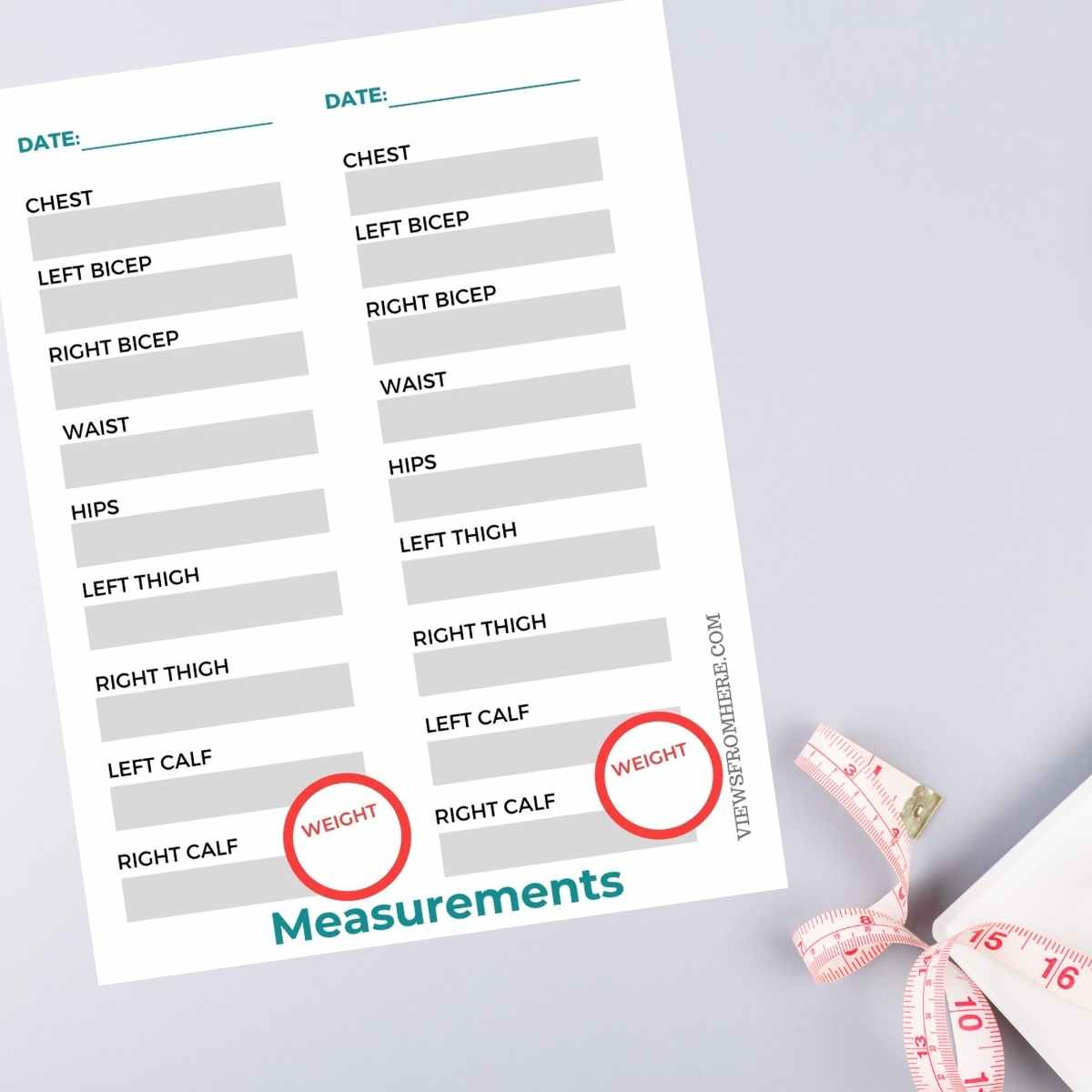How can you eat healthy on a budget?
Eating healthy as a family is important for our overall well-being. It keeps our bodies strong, boosts our energy levels and supports our growth and development. However, there’s a common misunderstanding that maintaining a healthy diet can be costly.
Well, let me tell you, it doesn’t have to be.

It is possible to maintain a healthy diet for the whole family without spending a lot of money. We’ll explore the wonderful benefits of meal planning on a budget, showing you how it can help you save money and still enjoy nutritious meals together.
By planning your family meals in advance, you can make smart choices and stretch your dollars further. It’s about balancing nourishing our bodies and being mindful of your budget.
The fitness journey
When I started my fitness journey, I didn’t automatically think about how much I spent at the grocery store. But as time went on that changed when I increased how many times I was eating daily. I needed to figure out how to eat healthy on a budget.
There are so many ways to budget your healthy lifestyle and save money like you will with your waistline.
Tips on how healthy family meal planning on a budget
Weekly meal planning
Meal planning is an easy way to save money while helping your family enjoy healthy meals. By taking some time to plan your weekly menu, you can reap numerous benefits and make the most of your food budget. Here’s how:
Benefits of planning meals in advance
When you plan your meals ahead of time, you have several advantages:
- Saves you money: By knowing what you need to buy, you can avoid impulsive purchases and stick to your budget.
- Reduces food waste: Planning helps you use ingredients efficiently, minimizing leftovers and reducing food waste.
- Saves time: With your meals already planned, you can streamline your grocery shopping and meal preparation, freeing up time during busy weekdays.
- Promotes healthier choices: By planning balanced meals, you can ensure your family gets the necessary nutrients, helping them maintain good health.
- ONE MORE
Creating a weekly meal plan

To start your weekly meal planning, create a meal planner calendar for the upcoming week:
- Choose meals: Select a variety of nutritious meals that your family enjoys. Consider incorporating a mix of proteins, grains, vegetables and fruits.
- Check your pantry staples: Take inventory of the ingredients you already have at home. This will help you avoid buying duplicates and use what you have on hand.
- Make a shopping list: Based on the meals you’ve planned, create a grocery shopping list of the items you need to purchase.
Smart shopping strategies
Planning meals based on what you already have
Before heading to the store, take inventory of the ingredients you already have at home. This allows you to plan meals around those items and avoid unnecessary purchases.
Look through your pantry, refrigerator and freezer to identify what needs to be used up and incorporate those ingredients into your weekly menu. You can reduce waste and save money by using what you already have at home.
Create a grocery list and set a grocery budget
Creating a grocery list is a key step in practicing healthy family meal planning on a budget. It helps you stay organized, save time and make informed choices at the store.
Scan grocery store sales flyers and ads to see what is on sale for the week before going to the store. And make sure you stick to your plan while in the store to help you spend what you set for your food budget.
Buy in season
Fresh fruits and fresh veggies are a great way to fill out healthy family meals. Although most fresh fruits and vegetables are available year-round, some are less expensive when they are in season.

Plan meals around fruits and vegetables that go a long way. Plan to include fruits and vegetables you can grab as quick snacks or turn into soups and casseroles that you can eat a couple of times during the week.
Fresh is not the only way
Buying seasonal fruits and veggies can save you money. However, frozen and canned produce can be budget-friendly alternatives when you need out-of-season items or want foods that stay fresh longer.
Do it yourself
Premade packaged food, fresh or frozen, is convenient but also expensive. They can be convenient but not always worth the expense. Most of the time, you can make them cheaper yourself.
For me, I bought myself a few kitchen gadgets I can use in meal prepping like a food processor, vegetable chopper and Nutribullet. Not only does it make it easier on the wallet; it also means less time in the kitchen.
Shop at alternatives
The Farmers market is a great way to buy local and fresh foods to feed your family. You often will find fresh produce cheaper than at the grocery store.
Follow the deals
Electronic coupons are an easy way to get back money on items you are already planning to buy. Use the electronic coupons for the store you already shop at by checking out the store’s website. Or you can use apps like Ibotta, which allows you to easily get money back for what you purchased by just taking a picture of your receipt with the app.
There’s no need to print coupons.
You can sign up here with my link and get $10 right away just for signing up!
Incorporate affordable ingredients
When it comes to healthy family meal planning on a budget, it’s important to focus on incorporating affordable ingredients. No need for a 20-ingredient recipe with items you need to go to a specialty store or order online because your local grocery store doesn’t carry them.
Emphasizing whole foods: Whole grains like brown rice, quinoa and oatmeal are affordable options and packed with essential nutrients. Similarly, legumes such as beans, lentils, and chickpeas are excellent sources of protein, fiber and vitamins. Fresh produce, particularly seasonal fruits and vegetables, provide a wide range of vitamins and minerals while being budget-friendly.
Tips for buying in bulk and using frozen vegetables: Buying staple ingredients like rice, pasta and beans in bulk can reduce costs. Frozen vegetables are another option as it often retains their nutritional value and can be stored for longer periods. Consider buying frozen fruits and vegetables when fresh options are expensive or not in season.
Using cost-effective protein sources
Beans and lentils are not only affordable but also rich in protein and fiber. They can be used in various dishes, such as soups, stews and salads. Eggs are another great protein source that can be versatile in many recipes, including omelets, quiches and egg muffins.
Incorporate meat alternatives such as tofu, tempeh and seitan, are often more budget-friendly than meat. They offer a good amount of protein and can be used as substitutes in recipes like stir-fries, sandwiches and burgers.
Cooking in batches and meal prep
Meal preparation is a game-changer when it comes to saving time and ensuring that healthier options are available for your family. By cooking in batches and practicing meal prepping, you can make the most of your time in the kitchen and streamline the process.

Time-saving benefits of batch cooking:
- Batch cooking involves preparing larger quantities of food at once, which can be portioned and stored for future meals. Grill, roast or bake protein like chicken and make a bigger batch of rice or sweet potatoes.
- Efficient use of time: By cooking multiple meals at one time while you are cooking, you can minimize the time spent in the kitchen throughout the week.
- Prep your vegetables: Prep your vegetables ahead of time, it reduces the time needed for chopping, slicing and cooking during busy weekdays.
Proper storage and reheating techniques:
- Portion and store: Divide your cooked meals into individual or family-sized portions using airtight containers or freezer bags.
- Refrigeration: Meals that will be consumed within a few days can be stored in the refrigerator. Make sure to cool them to room temperature before refrigerating and consume them within the recommended time frame.
- Freezing: For longer-term storage, freezing is an excellent option. Allow meals to cool completely before freezing. Use freezer-safe containers or bags, removing as much air as possible to prevent freezer burn. One of my favorite things to do is buy protein in bulk, break it down and then use my Foodsaver vacuum sealer machine to portion into smaller quantities to free until I am ready to put it to good use.
- Reheating: Thaw frozen food overnight in the refrigerator before reheating thoroughly. Use methods such as stovetop, oven, microwave or slow cooker, depending on the meal.
Maximizing leftovers and repurposing ingredients
When it comes to healthy family meal planning on a budget, making the most out of leftovers and repurposing ingredients is a smart approach.
Creative ways to use leftovers:
- Reinvent leftovers: Turn yesterday’s dinner into today’s new creation. For example, leftover roasted chicken breast can be used in sandwiches, salads, or one of my favorite meals, chicken and spinach quesadilla.
- Transform into casseroles or bakes: Combine leftover vegetables, proteins and grains with a sauce or cheese, and bake them into a casserole or a hearty bake.
- Stuff or wrap leftovers: Use leftover proteins or grains as filling for stuffed peppers, wraps or burritos.
Tips for reducing food waste:
- Use proper storage: Store leftovers in airtight containers to maintain freshness and prevent spoilage.
- Freeze extras: If you have larger quantities of leftovers that you won’t consume immediately, freeze them in portion-sized containers.
- Plan “leftover nights”: Designate specific nights of the week as “leftover nights” where everyone can enjoy a buffet-style meal, combining various leftovers.
Bonus: Let the family help
Let your kids and family help in the meal-planning process. Let them help you choose and suggest recipes or pick out ingredients at the grocery store. This can help make meal planning a family activity








As long as you have a cupboard full of spices, you’re good to go! Spices are cheap but have add so much flavor. Thanks for sharing!
Melanie, so true. I am always looking to try new spices. I always go down the spice aisle to see what’s on sale and pick one new thing once a month.
great tips. Ive been trying to get back on the healthier route but without breaking a budget of course 😉
I’m really bad at meal prepping because I always change my mind on what I want to eat on the day. However, like you, I have found that cutting out and replacing fancy ingredients in recipes has helped me cut down expenses. Here’s to a more experimental healthy journey.
Limiting specialty ingredients is a big one. I try to keep a list of unique spice and such I want to get for new recipes and when I see that I have a few check marks next to one I go ahead and buy it knowing I have a few meals to make with it. Usually it goes a long way 🙂
I love the idea of keeping it simple. I don’t think people realize sometimes that eating healthy can be kept simple. Often we like to stick to just meat and veggies!
Limiting specialty ingredients and keeping it simple is definitely huge! There are so many yummy recipes with a couple of ingredients anyone can make. Thank you for your suggestions!